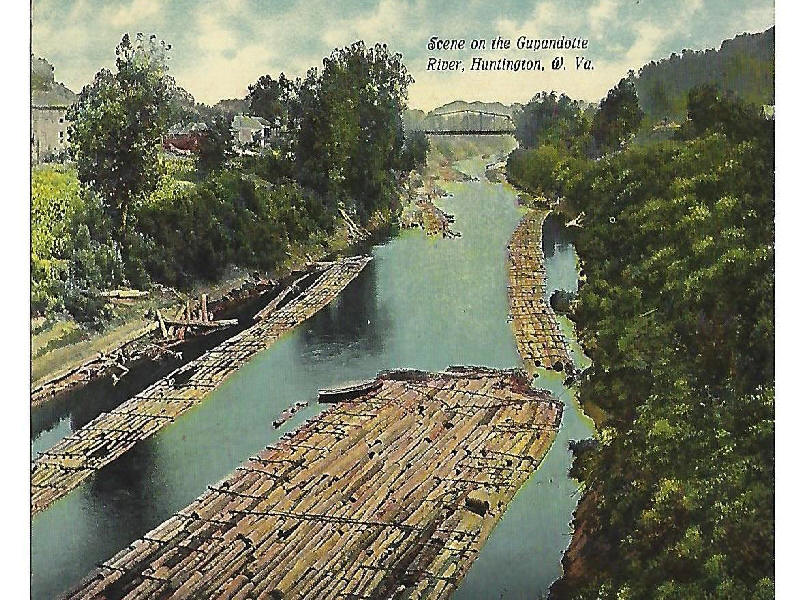
Timber Rafts
------------------------------------------------------------------------------------------------------

Cut from the hills at the headwaters of the Guyandotte River,
huge logs were floated down
the river to Guyandotte. In the late 1800s and 1900s, similar timbers
rafts could
be seen at the mouth of the Big Sandy River where it flows into the Ohio.
------------------------------------------------------------------------------------------------------
HUNTINGTON — The Guyandotte River
is nearly 160 miles long, flowing from its headwaters
near the Raleigh-Wyoming County line to the village of Guyandotte
(now part of Huntington), where it flows into the Ohio.
In the late 1800s and early 1900s, when logging was at its
height in the area drained by the
Guyandotte, trees - mostly yellow poplar - were brought out that were from three
to six
feet in diameter. Splash dams were built in the hills, which held back small
pools
that filled with logs. The dams were then released and the logs rushed
down
to the river, where they were lashed into small rafts to wait for the
high water that would come when the spring thaw
melted the snow off the hills.
Once this "log tide" came, the rafts were made into fleets for
the ride down the river.
When the logs reached Guyandotte, they were trapped by a temporary
timber dam, called a "boom," which stretched from one side
of the river to the other. Working around the booms
was a dangerous job and injuries were common.
At Guyandotte, some few logs were sorted, measured, paid for
and then taken to
a local sawmill to be turned into lumber. Hundreds, and sometimes
thousands
, of other logs remained in the water until the boom was removed and
they were released to float down the Ohio to market.
Some traveled as far as Cincinnati or Louisville.
With the coming of the Chesapeake & Ohio Railway, the rafting
of logs
on the Guyandotte dramatically decreased. With spur railroads
reaching the area upriver from the river's mouth, the last
boom at Guyandotte was taken out in 1916-17.
-----------------------------------------------------------
Note: This Article and picture appeared in the Herald-Dispatch Newspaper on Feb. 5, 2018.
-----------------------------------------------------------
[ Back ]